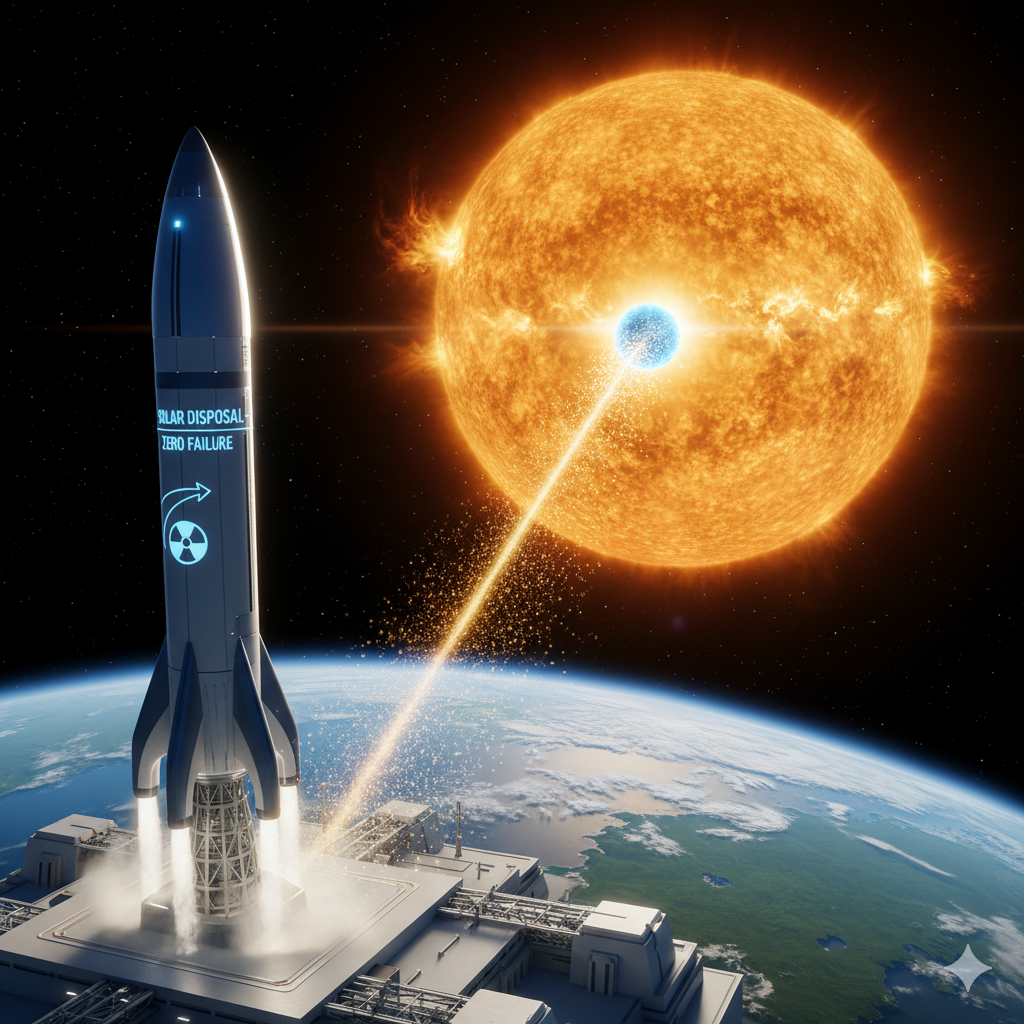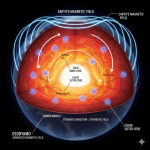Now Reading: Adding Isotopes To Earth’s Core for Magnetic Strength
-
01
Adding Isotopes To Earth’s Core for Magnetic Strength
Adding Isotopes To Earth’s Core for Magnetic Strength

In theory, adding radioactive isotopes to our earths core can help strengthen the Earth’s core’s and its ability to generate a stronger magnetic field. However, this is a theoretical idea as… one its impossible to gain access to this and two its a nuanced relationship primarily concerning the heat they generate, not a direct strengthening of the materials. Here’s the breakdown:
1. The Geodynamo and Magnetic Field
The Earth’s magnetic field is generated by a process called the geodynamo. This requires the constant motion (convection) of the electrically conductive liquid iron in the outer core. This motion, combined with the Earth’s rotation, generates electrical currents, which in turn produce the magnetic field.
For this process to work, the outer core needs a constant source of energy to drive the convection.
2. The Role of Radioactive Heat
The primary sources of energy driving core convection are:
• Secular Cooling: Primordial heat left over from Earth’s formation.
• Latent Heat of Crystallization: Heat released as the liquid outer core solidifies to grow the solid inner core.
• Gravitational Energy: Released as lighter elements are squeezed out from the growing inner core.
Radioactive decay of elements like Uranium, Thorium, and Potassium in the core and mantle provides a fourth, crucial source of heat.
3. How Heat Strengthens the Magnetic Field
The heat from radioactive decay contributes to the thermal buoyancy that drives convection in the outer core.
• Sufficient Heat Flux: The radioactive heat helps maintain the necessary temperature gradient between the core and the cooler mantle above it. This heat flux is what keeps the liquid iron turbulent.
• Sustaining the Dynamo: By sustaining this convection over geologic timescales (billions of years), the radioactive heat effectively sustains the geodynamo, preventing it from dying out as the Earth slowly cools. A well-sustained, vigorous convection current translates to a stronger, more persistent magnetic field.
Key Consideration: Location Matters
The impact of radioactive isotopes depends heavily on their location:
Therefore, while the heat generated by these isotopes is essential to the long-term energy budget of the core, the net effect depends on the balance and distribution of these heat sources throughout the deep Earth.

Extra Knowledge as to WHY?
A moderate amount of radioactive heat in the core is theoretically beneficial for strengthening the magnetic field’s longevity and intensity.
Strengthening Earth’s core, which in turn strengthens its magnetic field (or magnetosphere), would significantly benefit life and technology on the planet.
The magnetic field acts as an invisible shield, and making it stronger would lead to:
Enhanced Protection from Space Weather
The most significant gain would be a thicker, more robust shield against harmful space radiation and solar activity.
Deflection of Solar Wind and Cosmic Rays: A stronger field would more effectively deflect the constant stream of charged particles (solar wind) from the Sun and high-energy cosmic rays from deep space. These particles can damage biological tissue and sensitive electronic equipment.
Atmospheric Preservation: The magnetic field is crucial for preventing the solar wind from stripping away the Earth’s atmosphere. A stronger field would further safeguard the atmosphere, including the ozone layer that protects us from harmful ultraviolet (UV) radiation. This process is evident on Mars, which lost its magnetic field and subsequently most of its atmosphere.
Increased Stability during Solar Events: While geomagnetic storms (caused by coronal mass ejections, or CMEs) can temporarily disrupt the magnetic field, a stronger baseline field could provide greater resilience during these events, reducing the likelihood of severe impacts.
Reduced Technological and Infrastructure Vulnerabilities
A more powerful magnetic shield would offer greater protection to our critical infrastructure and space assets.
Satellite Safety: Satellites, particularly those in higher orbits, are vulnerable to radiation damage, which can cause malfunctions or complete failures. A stronger magnetic field would reduce the radiation exposure in space, potentially extending the lifespan of satellites and improving the reliability of space-based communication and navigation systems (like GPS).
Reduced Geomagnetically Induced Currents (GICs): Strong geomagnetic storms can induce currents in long conductors like power grids, pipelines, and telephone cables, leading to power outages and equipment damage. A more robust magnetosphere could reduce the intensity of GICs caused by solar activity, protecting terrestrial infrastructure.
Safer Space Travel: Astronauts would be exposed to less radiation in low-Earth orbit, making missions safer and potentially allowing for more flexibility in planning extravehicular activities.
Potential for Higher Oxygen Levels
Some scientific research has suggested a correlation between the strength of the geomagnetic field and global oxygen levels over the planet’s history. A consistently stronger field might indirectly contribute to maintaining or increasing atmospheric oxygen concentration, further supporting biological life, though the exact mechanisms are complex and still being studied.
In summary, strengthening the Earth’s core and its magnetic structure would primarily result in a more impenetrable global shield, securing our atmosphere, protecting life from space radiation, and safeguarding the technological systems modern society relies upon.
















